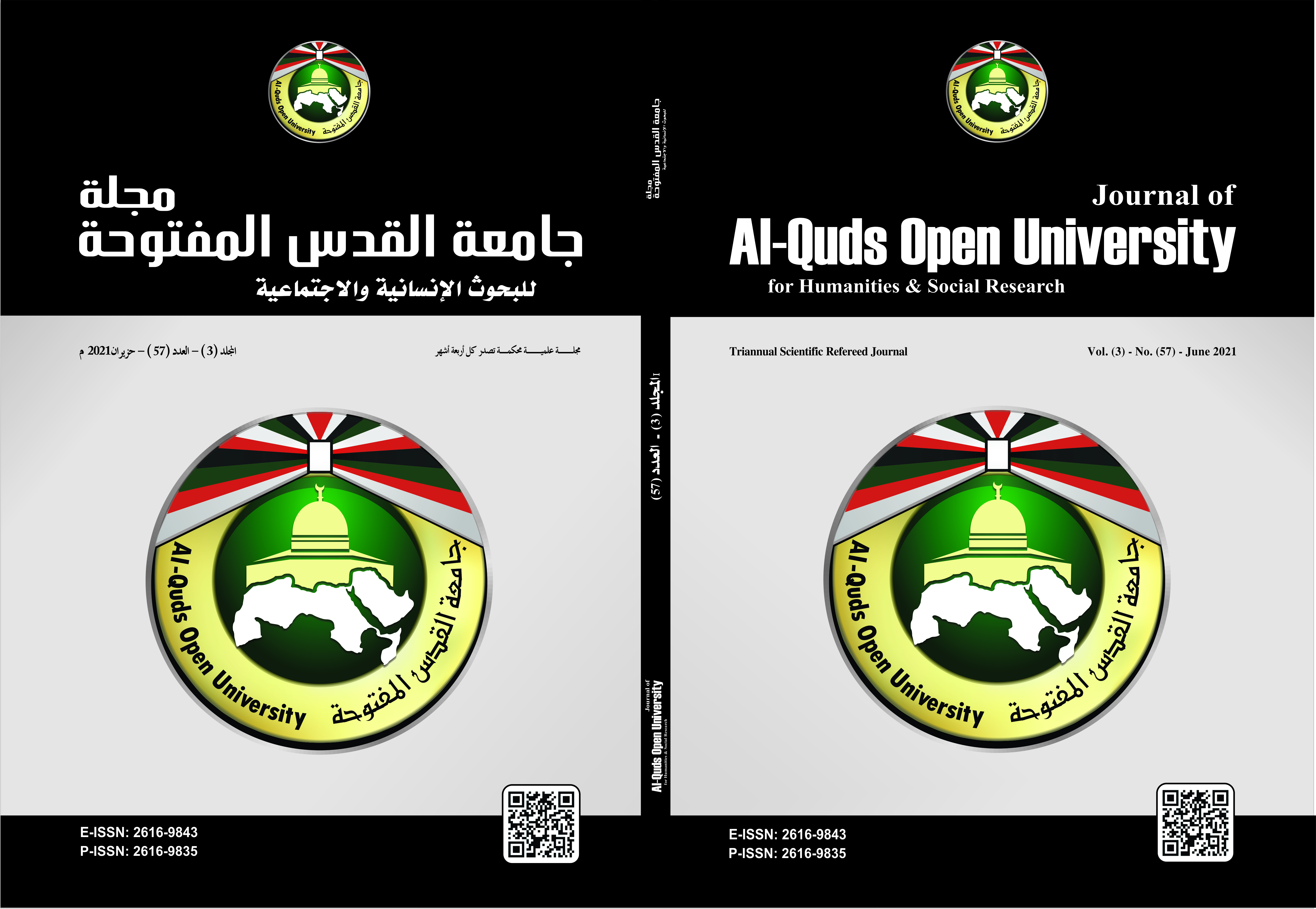أثر المرجعيات الثقافيّة في بناء النص الروائي، دراسة في رواية رسمتُ خطًا في الرمال للدكتور هاني الراهب
DOI:
https://doi.org/10.33977/0507-000-057-004الكلمات المفتاحية:
بناء النص الروائي، الموروثات التراثية.الملخص
تناول البحث الموروثات التراثية وأثرها في البناء الفني، لرواية رسمت خطًا في الرمال، اتكأ الكاتب على الأشكال التراثية المختلفة: التاريخية، والأسطورية، والأدبية، فضلاً عن الإحالات الثقافية المستمدة من الكتب السماوية، وقد تضافرت هذه الموروثات، لإضافة أبعاد دلالية من خلال الإيحاء والتلميح، بعيداً عن المباشرة والتصريح التي تفقد العمل الفني أدبيته.وظّف الكاتب الموروثات التراثية، برؤية معاصرة، وقد أظهرت الرواية حصافة الكاتب وإبداعه في تشكيل الموروثات تشكيلاً فنياً، فجاءت الشخصيات التاريخية، والأسطورية، تحمل أفكار الكاتب، مما يشير إلى التفاعل الكبير الذي أحدثه، بين الماضي والحاضر لاستشراف المستقبل، فلم تكن الموروثات عبئا على الرواية، بل كانت جزءاً من نسيجها البنائي والموضوعي.قام الكاتب بتسليط الضوء على مشكلات الإنسان العربي المعاصر، التي كانت نتيجة اكتشاف النفط في عدد من الدول العربية، ومن أبرزها غياب دور المثقفين والقيمة الحضارية لهم، فضلا عن الخلافات والصراعات بين الدول العربية، التي خلّفت الفرقة والضعف للأمة.المراجع
إبراهيم، عبد الحميد، مقالات في النقد الأدبي، القاهرة، دار الهداية، 1987م.
ابن منظور، أبو الفضل جمال الدين(ت711ه)، معجم لسان العرب، تحقيق: عامر أحمد حيدر وعبد المنعم خليل،بيروت، دار الكتب العلمية، 2003م.
جعفري، بسمات سالم خليل، تجليات ألف ليلة وليلة في الرواية العربية المعاصرة، عمّان، رسالة دكتوراه، الجامعة الأردنية، 2014م.
الحلح، نوال، تقنية السرد عند الروائي هاني الراهب، رسالة ماجستير، جامعة دمشق، 2009م.
الراهب، هاني، ألف ليلة وليلتان، دمشق، منشورات الاتحاد الكتاب العرب، 1977م.
الراهب، هاني، رسمت خطا في الرمال، بيروت، دار الكنوز الأدبية، 2000م.
زايد، علي عشري، استدعاء الشخصيات التراثية في الشعر العربي المعاصر، طرابلس، الشركة العامة للتوزيع،1978م.
السواح، فراس، مغامرة العقل الأولى، دمشق، دار علاء الدين، 1993م.
شنوت، نور صاحب، موسوعة الأساطير والقصص، عمان، دار دجلة، 2008م.
الشوابكة، محمد، ثنائيات في السرد، وزارة الثقافة، عمان، ط1، 2012م.
العتابي، سعد، الملحمية في الرواية العربية المعاصرة، بغداد، دار الشؤون الثقافية،2001م.
قاسم، سيزا، "البنيات التراثية"، مجلة فصول، عدد أكتوبر،سنة 1980م.
الكتاب المقدس، العهد الجديد، الإصحاح السابع، مصر، دار الكتاب المقدس، 2001م.
ماثيسن، ف.أ.، ت.س. إليوت الناقد الشاعر مقال في طبيعة الشعر، ترجمة إحسان عباس، بيروت، مؤسسة فرنكلين، 1965م.
مبروك، مراد عبد الرحمن، العناصر التراثية في الرواية العربية في مصر، القاهرة، دار المعارف، ط1، 1991م.
المخلف، حسن علي، التراث في الرواية السورية، دمشق، رسالة دكتوراه، جامعة دمشق،2014م.
هاملتون، أديث، الميثولوجيا، ترجمة حنا عبود، دمشق، منشورات اتحاد الكتاب العرب، 1990م.
هيكل، أحمد، في الأدب واللغة، القاهرة، دار الهيئة المصرية، ط1، 1998م.
التنزيلات
منشور
كيفية الاقتباس
إصدار
القسم
الرخصة
- الالتزام التام بأخلاقيات البحث العلمي.
- الالتزام التام بحقوق الملكية الفكرية.
- حقوق الطبع والنشر تؤول للمجلة.
- الحصول على موافقة المجلة لإعادة نشر البحوث أو ترجمتها.
- الالتزام التام بتعليمات هيئة تحرير المجلة.













_2.png)
_.png)
_2.png)
_1.png)
_.png)

